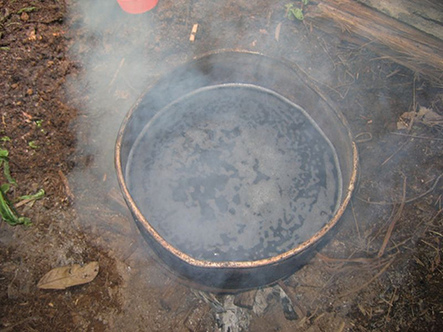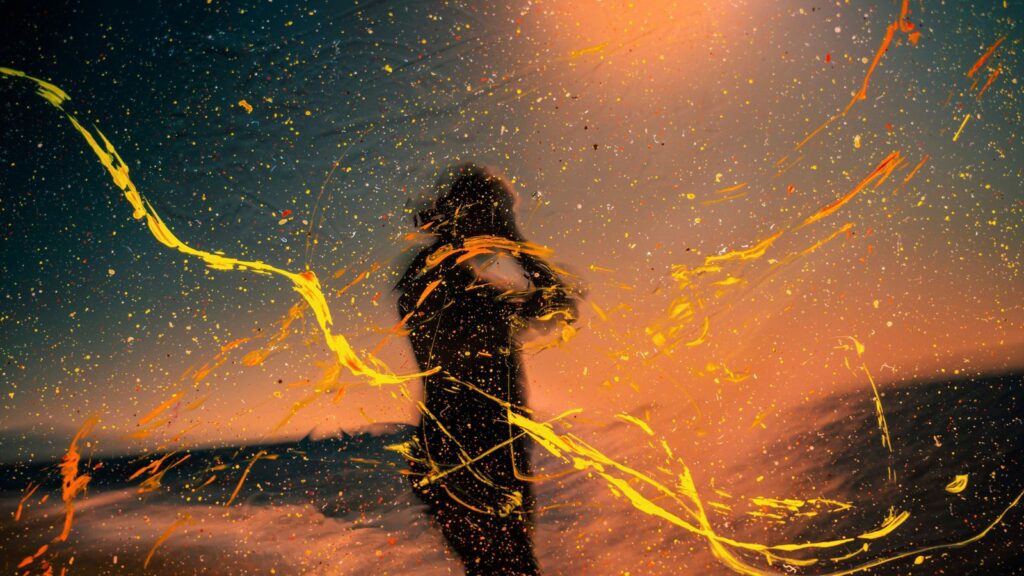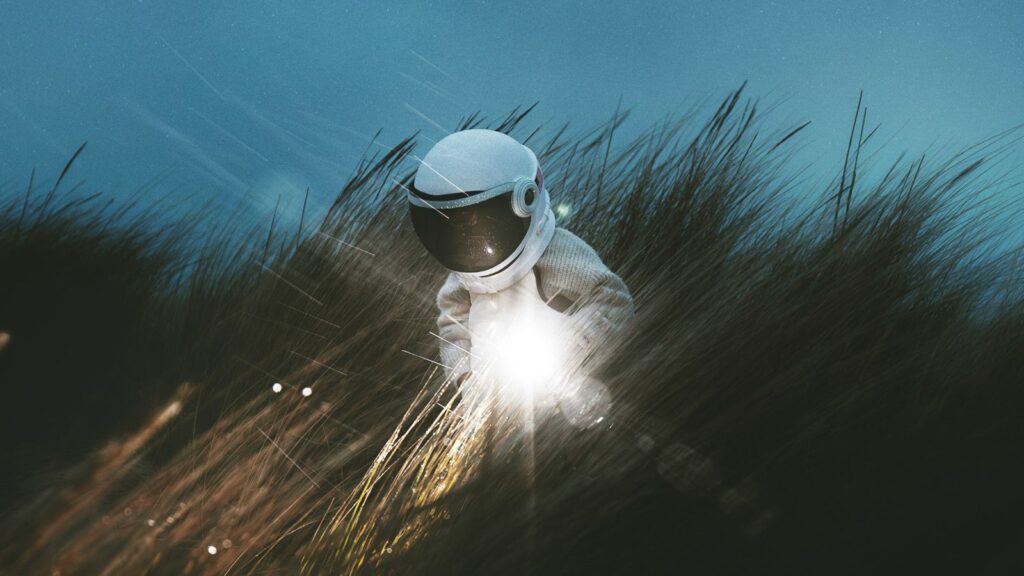At a recent panel on ayahuasca at the conference of The
Society for the Anthropology of Consciousness at U.C. Berkeley, I was intrigued
to hear a social critic question the “inventive ‘religious’ mystifying of
ayahuasca today in northern hemisphere circles,” stating that “we
need to acknowledge that, and question whether the elaboration of further
mythology is really ‘healing.'” Finally, he raised the serious question:
Can healing arise from self-delusion?
That same day, returning home I found
the following query, the sort that as a writer on Amazonian shamanism and a guide for
groups down to the Peruvian rainforest I occasionally receive. With my ears
still ringing from the critic’s frontal assault on the most cherished tenet of
work with ayahuasca, it struck me as particularly timely:
What are your feelings
towards Americans who, without ever having traveled to visit a real Amazonian
curandero, take it upon themselves to brew their own ayahuasca? I currently
work with a gentleman who has been doing this for nearly a year now, I believe
… ordering the components of the brew and making it in his kitchen. He claims
that the ayahuasca ally herself told him that he was doing a good job and that
he should continue. But as an individual he seems to have a tenuous hold on
reality and handles his day-to-day affairs and those around him with an almost
frightening lack of compassion. As well, he always describes his experiences
with ayahuasca as “tripping,” and has even taken to mixing his
hallucinogens (DMT with mushrooms, LSD with ayahuasca). I fear for him, because
he does seem to possess a level of self-delusion I’ve never encountered before.
Just curious about your take on situations like that.
I wish to share my response with readers of Reality Sandwich by way
of opening up a dialogue about this very important question.
Although I don’t know the gentleman you are referring to, I
share your concern about the portrait of spiritual narcissism you paint.
As the native America writer Vine Deloria Jr. put it,
Western society is a culture of “rights” rather than “responsibility.” Without an internal lodestone of
instinctive veneration to guide us, it’s all too easy in this consumerist
culture to appropriate ayahuasca as just another personal spiritual trip.
In indigenous cultures — our first teachers in approaching
these sacred brews which were, after all, their discovery — such plants are
never done isolated from the guidance of a shaman and a larger communal context
that tests and verifies experience. To some Westerners this regime may sound like
an infringement upon their individual freedoms. But experience teaches that
this tradition, like the toad, ugly and venomous, carries a precious stone in
its head. There is a lineage, extending over millennia, that discovered and
made allies of these plants, learned how to direct them toward healing, and who
many mature shamans say continue to work “from the other side.” Whether we like
it or not, veneration of the ancestors is essential to enter that way.
For Western culture, so long cut off from the sustaining
powers of the Earth, such guidance is, in my experience, particularly
necessary. Otherwise, work with ayahuasca and other entheogens becomes a “head
trip,” a privileged vertical jaunt into other realms of consciousness without
the horizontal work of embodiment. What good are transcendental insights if you
behave like an asshole to your kids? Or make yourself insufferable due to the special
privileges you give yourself because you’ve been “enlightened” by a sacred
plant?
At the recent conference of the Society for the Anthropology
of Consciousness at U.C. Berkeley, I was intrigued to hear the question, “Can
we be healed by self-delusion?” posed about Western ayahuasca practices. This
challenge to the status quo of the ayahuasca world was almost immediately
followed by another presenter going forward and saying, “If the healing of my
severe asthma, which had debilitated me from childhood, was a delusion, I’ll take
more of it, please!”
The real point for me, which may have gone unnoticed, was
that latter presenter’s healing occurred under the guidance of a female shaman
in Iquitos who had prepared and administered his brew in a traditional way. It
did not resolve the fundamental issue raised previously: How can we distinguish
between self-delusion and healing, especially without the guidance of a mature
practitioner in the beginning stages of our work?
Before attempting to answer that question, I should clarify I’m
not a traditionalist in the narrow sense of privileging native spirituality as
primary and entheogenic practices in the West as secondary, imitative
offshoots. Many of us stumbled upon the healing effects of entheogens in quite
non-traditional contexts. We know the taste of that experience, the gratitude
that arose from it, and the freedom that the loving embrace of plant-sentience
gave us.
Beginner’s luck, if you like.
As in the practice of Buddhist meditation, however, the
choice eventually arises whether to remain a dilettante kicking around at the
entryway or to embark upon the path of the ancestors. Much like the arrival of
Buddhism in the West, I believe that the resurgence of these shamanic
traditions in our materialist culture is to be embraced and our work lies in
receiving the best transmission we can, while adapting the practices to the
needs of our present circumstances. Shamanism, like Buddhism, is evolving as it
enters the West, but will lose its virtue if it is cut off from its origin.
To return to our question, I think the key to distinguishing
self-delusion lies in a correct definition of terms. The “self” the researcher
was referring to is no doubt the Cartesian one that rules our modern sense of
consciousness, a torturous epistemological “dualism” which is a good candidate
for “delusion” itself. According to Richard Tarnas, from the Cartesian outlook,
“rational man knows his own awareness to be certain, and entirely distinct from
the external world of material substance, which is epistemologically less
certain and perceptible only as an object. Thus res cogitans — thinking substance, subjective experience, spirit,
consciousness, that which man perceives as within — was understood as
fundamentally different and separate from res
extensa — extended substance, the objective world, matter, the physical
body, plants and animals, stones and stars, the entire physical universe,
everything that man perceives as outside his mind” (277-78).
From the indigenous perspective, which entheogenic work is
reintroducing into the West, that very concept of the self is mad as a hatter.
Where else does shamanic healing and knowledge arising from immersion in the
greater sentience of the cosmos come from, except from plants and animals,
stones and stars? We could even say our culture’s metaphysical division of
experience into a res cogitans and a res extensa is the delusion of our era, and that spiritual isolationism,
masquerading as an individual right to exclusive, personal experience, is the
trap that users of entheogens are most prone to fall into. Or worse. We have to
admit that for some Westerners the voice of a psychoactive plant can be a
siren’s rapturous song, offering them a false intimacy with a plant
consciousness that understands all their suffering and gives them a sense of
meaningfulness such as they’ve been deprived of for their entire lives.
Suddenly, they’re the recipient of a special, privileged communication, as if
from God. Without a mature practitioner around to kick their butt, they may
never recover from such spiritual stink.
In my present literary endeavor, The Siren’s Rapturous Song (to be published by Inner Traditions in
the Fall of 2011), I explore the
indigenous and shamanic roots of our Western tradition in Homer’s The Odyssey and argue that Western
society actually does have a touchstone by which to evaluate the legitimacy of
our newly evolving shamanic practices. It lies in going native again.
As the poet Gary Snyder put it, “for non-Native Americans”
(and we could throw in civilized Europeans in relation to Europe as well), “to
become at home on this continent, he or she must be born again in this hemisphere, on this continent” (43). We must
rediscover “the passage into that myth time world that had been all but
forgotten in Europe,” crossing “an almost visible line out of history and into
the perpetual present, a way of life attuned to the slower and steadier
processes of nature”* (15).
Nature is our touchstone, in the same non-dual perception
once declared by the Zen Buddhist master Dogen: “Clearly I know, the mind is mountains, rivers, and the
great earth; sun, moon, and stars.” Shamanism, as well is a communion
with the larger sentience of the cosmos, an experience which can be verified
and confirmed by a community of practitioners. Without that passage into “indigenous”
experience, we will remain stuck in the epistemological prison cell bequeathed
to us by Descartes, and our ayahuasca healing with be self-delusion indeed.
Works Cited
Snyder, Gary. The
Practice of the Wild. Washington D.C.: Shoemaker and Hoard, 1990.
Tarnas, Richard. The
Passion of the Western Mind. New York: Ballantine Books, 1991.
* For Native Americans as well, the rupture with the
sentience of the cosmos has occurred as a consequence of the invasion of the
Westerner Europeans. As I heard a Native American state ruefully in a tipi
gathering, “Our ancestors could once speak with the animals, but we’ve lost
that ability nowadays.”















